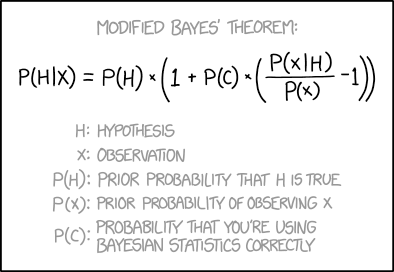The first wave of archaic hominin migration out of Africa which expanded as far into Southern Asia as Indonesia and China,
Homo erectus, probably never reached Northern Asia in any significant numbers.
But, before modern humans arrived in Northern Asia,
Denisovans and
Neanderthals (archaic hominins) reached at least as far as the Altai Mountains. We don't know with much precision when they arrived there or by precisely what route, but both were present in the Altai region around 90,000 years ago when a child with one Denisovan parent and one Neanderthal parent was born. Sometime after 40,000 years ago, they became extinct (or at least almost extinct) in the region. We don't know if they ever overlapped with modern humans in that region, but the timing of the latest evidence of their presence in Northern Asia and the earliest evidence of a modern human presence in Northern Asia is suspiciously close in time.
Ancient Altai Neanderthal DNA shows evidence as admixture with modern humans that was estimated to have taken place ca. 100,000 years ago, but these admixture events probably took place with their ancestors in Southwest Asia, rather than Northern Asia.
Ancient DNA and archaeology establishes that the original modern humans in Siberia (who arrived there about 38,000 years ago), the "
Ancient North Siberians" (ANS) were wiped out during the Last Glacial Maximum (about 20,000 years ago) except for refugia populations in Beringia (and possibly also the Altai Mountains region) who contributed to Ancient Paleosiberian gene pools.
Ancient DNA also confirms the hypothesis that Siberia was the source for both the "Ancient Paleosiberian" (AP) population that emerged after the Last Glacial Maximum which gave rise to the founding population of the Americas (which has only a few relict tribes in Siberia itself who are their descendants), and for the East Asian shifted "Neosiberian" populations that largely replaced the Ancient Paleosiberians around 11,000 years ago who were a genetic source for Na-Dene and Inuit Native Americans ancestors' migration to the Americas and most modern indigenous Siberians.
In the last 7000 years or so, there have been more waves of migration across Northern Asia, although some of these waves did not reach all of the way to far Northeastern Siberia.
First,
Uralic populations migrated West and East from central Siberia (starting ca. 5000 BCE).
Then,
Tocharian Indo-Europeans migrated from the Pontic-Caspian steppe as far east as the Tarim Basin which they reached ca. 2000 BCE, and a trickle of Pontic-Caspian steppe people made it as far as Bronze Age China.
Ethnically and linguistically
Turkish populations migrated west starting in the first few centuries BCE and CE, and extending their reach from a source in Northeast Asia to a maximum extend in Turkey (with a substantial Turkish immigrant population arriving Germany after World War II). The
Oghuz Turks started to arrive in Anatolia around the 9th century CE and this demographic shift (in Anatolia, a significant introgression into the pre-existing population but not a population replacement) was consolidated by the 11th century
Seljuk Empire which was both Turkic and Persian that controlled almost all of Anatolia.
By the 13th century CE there was a
Mongolian wave of western migration (which also expanded to the East from Mongolia). The eastward Mongolian expansion had a more lasting impact than the western expansion.
A few centuries later, the
Russians, initially with a Scandinavian elite and Slavic masses, migrated east again, leaving us with the current status quo, more or less. This expansion wiped out all but a few thousand of the remaining Ancient Paleosiberian populations in Siberia. The Russians made it all of the way to Alaska, uniting all of Siberia and former Beringia and Alaska politically as well as biogeographically, until 1867 when the
Alaska Purchase transferred Alaska to the United States.
The paper recounting the new ancient DNA discoveries has the following abstract and citation:
Far northeastern Siberia has been occupied by humans for more than 40 thousand years. Yet, owing to a scarcity of early archaeological sites and human remains, its population history and relationship to ancient and modern populations across Eurasia and the Americas are poorly understood.
Here, we report 34 ancient genome sequences, including two from fragmented milk teeth found at the ~31.6 thousand-year-old (kya) Yana RHS site, the earliest and northernmost Pleistocene human remains found.
These genomes reveal complex patterns of past population admixture and replacement events throughout northeastern Siberia, with evidence for at least three large-scale human migrations into the region.
The first inhabitants, a previously unknown population of "Ancient North Siberians" (ANS), represented by Yana RHS, diverged ~38 kya from Western Eurasians, soon after the latter split from East Asians.
Between 20 and 11 kya, the ANS population was largely replaced by peoples with ancestry from East Asia, giving rise to ancestral Native Americans and "Ancient Paleosiberians" (AP), represented by a 9.8 kya skeleton from Kolyma River. AP are closely related to the Siberian ancestors of Native Americans, and ancestral to contemporary communities such as Koryaks and Itelmen. Paleoclimatic modelling shows evidence for a refuge during the last glacial maximum (LGM) in southeastern Beringia, suggesting Beringia as a possible location for the admixture forming both ancestral Native Americans and AP.
Between 11 and 4 kya, AP were in turn largely replaced by another group of peoples with ancestry from East Asia, the "Neosiberians" from which many contemporary Siberians derive. We detect additional gene flow events in both directions across the Bering Strait during this time, influencing the genetic composition of Inuit, as well as Na Dene-speaking Northern Native Americans, whose Siberian-related ancestry components is closely related to AP.
Our analyses reveal that the population history of northeastern Siberia was highly dynamic, starting in the Late Pleistocene and continuing well into the Late Holocene. The pattern observed in northeastern Siberia, with earlier, once widespread populations being replaced by distinct peoples, seems to have taken place across northern Eurasia, as far west as Scandinavia.


